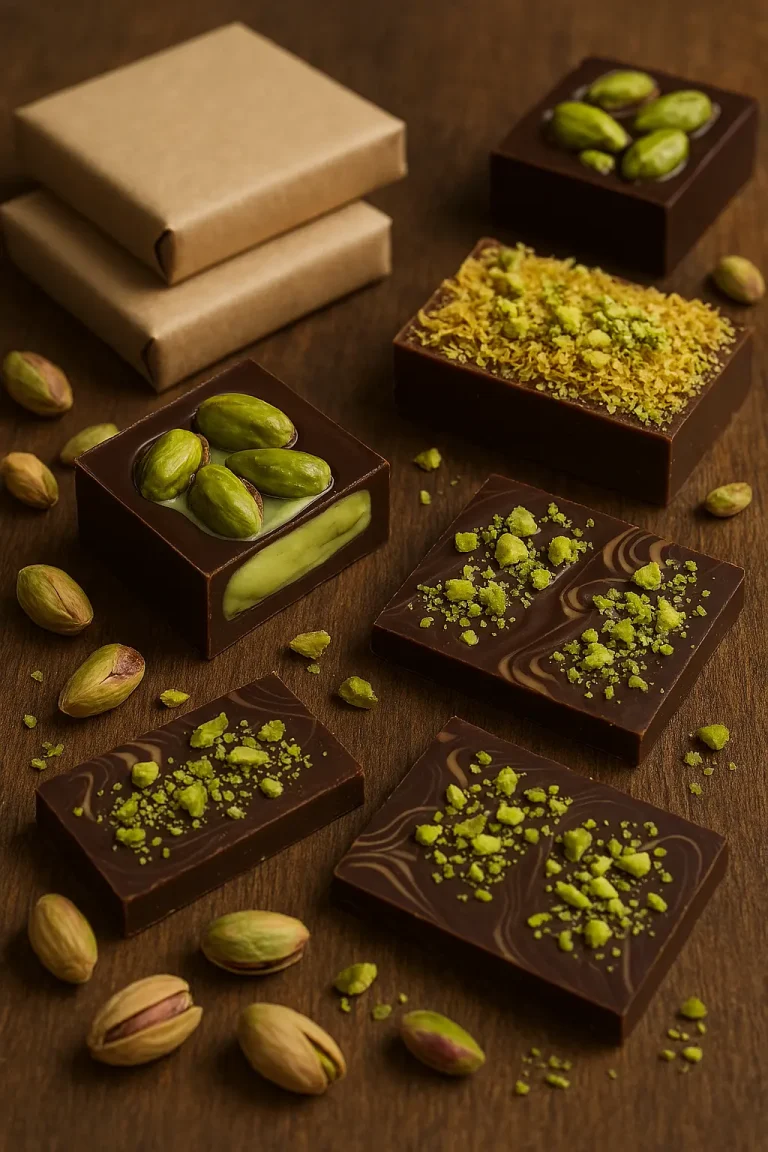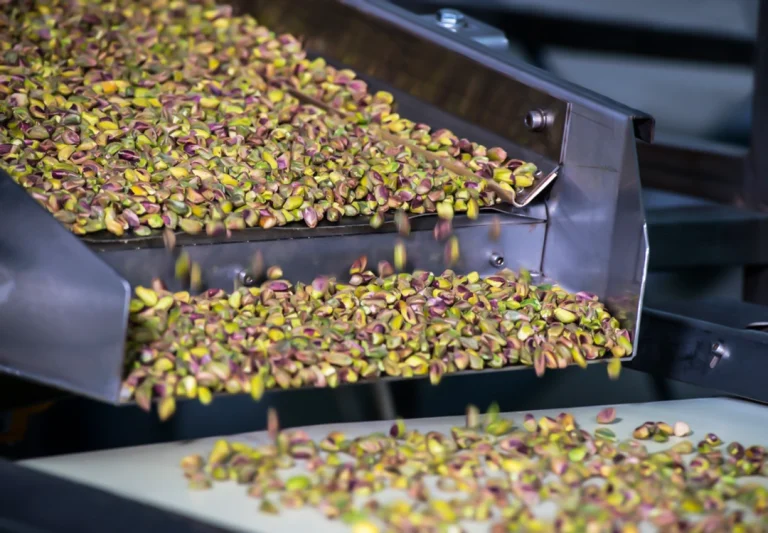Introduction – A Green Revolution in Taste
The year 2025 has marked a turning point in the global food industry, and the hero of this transformation is none other than the pistachio. Once considered a specialty nut, pistachio has risen to become the world’s most celebrated flavor, inspiring desserts, drinks, and snacks across continents. Walk into any modern café, bakery, or gelato shop and you are bound to find a pistachio creation — from silky gelatos and artisan macarons to lattes with a creamy green twist.
But why pistachio, and why now? Food experts agree that the pistachio craze of 2025 is more than just another short-lived food fad. It is a cultural movement that combines health, luxury, and social media virality. Thanks to its unique blend of taste, nutrition, and vibrant aesthetics, pistachio has emerged as a flavor that resonates with the values of today’s consumers.
The Viral Spark – How Dubai Chocolate Changed the Game
One of the most fascinating aspects of pistachio’s rise to global fame is the role of Dubai Chocolate, a pistachio-stuffed confection that exploded on TikTok and Instagram. Millions of videos showcasing the dessert’s rich chocolate shell and bright green pistachio filling went viral, turning a regional delicacy into an international sensation.
This viral phenomenon had real economic consequences. Demand for pistachios surged across Asia, Europe, and the Middle East. Supermarkets and café chains scrambled to stock pistachio-inspired treats, while global brands like Starbucks and Häagen-Dazs rushed to release new pistachio-flavored lattes, frappes, and ice creams. Artisanal bakeries in Paris, London, and New York now proudly feature pistachio croissants, éclairs, and cheesecakes as their star items.
Food trend analysts have declared pistachio the “Green Gold of 2025”, reflecting both its cultural symbolism and its increasing premium value in the global market.
A Flavor Beyond Luxury – The Nutritional Power of Pistachios
What makes pistachio different from other trendy flavors is that it is not only delicious but also highly nutritious. While many viral food trends fade away due to health concerns, pistachio offers a unique balance of taste and wellness.
Pistachios are rich in:
- Protein: making them an ideal snack for athletes and fitness enthusiasts.
- Fiber: supporting digestive health and satiety.
- Antioxidants: which promote heart health and reduce inflammation.
- Healthy fats: beneficial for cholesterol and brain function.
- Vitamins and minerals: including vitamin B6, copper, manganese, and potassium.
This nutritional profile aligns perfectly with the priorities of modern consumers who are increasingly health-conscious and seek foods that provide both pleasure and wellness. Vegan, keto, and Mediterranean diets all embrace pistachios as a versatile and wholesome ingredient.
Pistachios in Global Cuisine – From Gelato to Lattes
Pistachios have become a staple in the global culinary scene. In Italy, pistachio gelato now outsells many traditional flavors like strawberry and lemon. In France, pâtissiers are innovating with pistachio mille-feuilles and macarons. In the Middle East, pistachio baklava remains a timeless classic but is now reimagined with modern twists like pistachio milk cakes.
Meanwhile, in the United States, pistachio lattes and pistachio butter are trending in coffee shops and health stores. Plant-based milk alternatives infused with pistachio are also gaining traction as eco-friendly, dairy-free choices. The flavor’s adaptability — sweet, savory, or beverage — makes it a chef’s dream.
The Global Pistachio Market in 2025
Behind the scenes of this flavor boom lies a powerful economic story. The pistachio market is expanding at an unprecedented rate, driven by:
- Rising consumer demand: fueled by social media trends and health awareness.
- Premium positioning: pistachio products are often marketed as luxury, allowing for higher margins.
- Diverse applications: from snacks and desserts to beverages and even cosmetics.
The biggest suppliers in the world are Iran, the United States (California), and Turkey. Iran is renowned for its diverse varieties such as Ahmad Aghaei, Akbari, Kalleh Ghouchi, Fandoghi, and Badami, each offering unique flavors and shapes. The U.S. dominates with large-scale mechanized production, while Turkey maintains a strong regional market.
China, India, the UAE, and European countries like Germany and Italy remain some of the largest importers. Interestingly, with the drop in tariffs in China, American pistachios have gained easier access, sparking increased competition with Iranian suppliers.
Export Opportunities – Why 2025 Is a Golden Year
For exporters, 2025 offers unparalleled opportunities. With pistachio crowned as the flavor of the year, companies that can deliver premium-quality, well-packaged, and certified pistachios will enjoy a competitive edge.
The key strategies for exporters include:
- Certification & Standards: ensuring HACCP, ISO, and food safety certifications to meet international regulations.
- Innovative Packaging: vacuum-sealed bags, retail-ready boxes, and eco-friendly packaging boost product appeal.
- Market Diversification: targeting not only traditional markets like Europe but also emerging markets in East Asia and Africa.
- Brand Storytelling: highlighting pistachio’s heritage, health benefits, and sustainability to create emotional connections with buyers.
Iran, with its centuries-old pistachio tradition, is especially well-positioned. Despite logistical challenges, Iranian pistachios remain prized for their distinctive taste and natural richness.
Sustainability – Pistachios and the Future of Food
Another reason pistachio has become the flavor of 2025 is its alignment with sustainability trends. Pistachio trees are naturally drought-tolerant, making them suitable for arid climates. In an age where water scarcity is a major issue, crops like pistachios are seen as resilient and eco-friendly alternatives.
Furthermore, many farms are adopting modern irrigation technologies, solar-powered processing plants, and sustainable farming practices to reduce environmental impact. Consumers increasingly want to know that their favorite foods are produced responsibly — and pistachios fit well into this narrative.
Challenges in the Pistachio Industry
Despite its success, the pistachio industry faces challenges. Exporters must navigate:
- Fluctuating global prices due to supply-demand dynamics.
- Competition between Iran, the U.S., and Turkey.
- Logistical hurdles like sanctions, shipping costs, and customs regulations.
- Climate change impacts on harvest yields.
However, these challenges are also opportunities for innovation, efficiency, and building stronger trade networks.
The Future – Beyond 2025
Is pistachio just a passing craze? Analysts argue otherwise. While some food fads burn out quickly, pistachio’s combination of flavor, health, culture, and versatility ensures long-term relevance. Industry insiders believe pistachio will remain a core flavor in global cuisine, much like chocolate or vanilla, but with a modern, health-driven identity.
By 2030, pistachios are expected to be not only a staple in desserts and snacks but also in functional foods, protein supplements, and even beauty products thanks to pistachio oil and extracts.
Conclusion
Pistachio is not just the flavor of 2025 — it is a story of tradition meeting innovation, of health converging with indulgence, and of global demand shaping local opportunities. From viral social media trends to serious economic implications, pistachios have transcended their role as a snack and become a cultural and commercial powerhouse.
For consumers, pistachio means taste, wellness, and luxury. For exporters and producers, it represents growth, opportunity, and global recognition. As the world celebrates pistachio in 2025, one thing is certain: the green gold has only just begun its reign.




